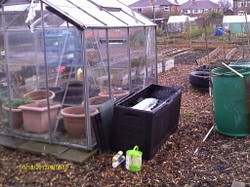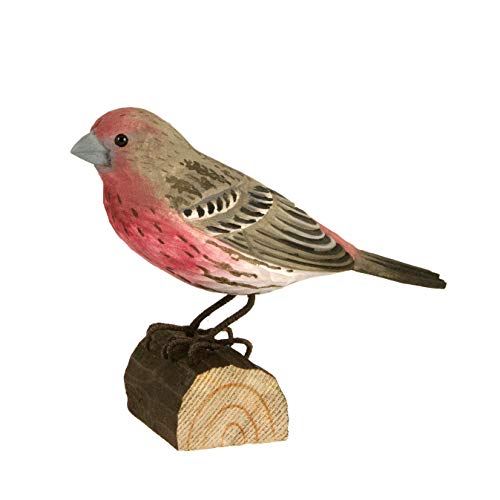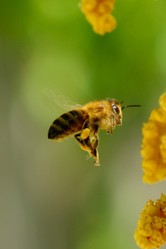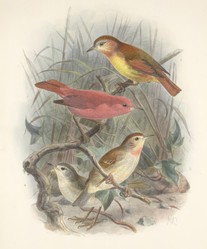Some gardeners are scared of having living animals in their gardens, but I believe that the world is for all creatures to share, and so when some creature comes to my allotment plot, I don't want to drive it away,al though I do want to protect my crops from predators. Over the years I have kept my eyes open to the creatures that come and go. Some remain a long time, whereas others are occasional visitors

Wildlife on the allotment
by frankbeswick
Allotment plots, being larger than gardens, are places where wildlife can be found, if you are alert to it.
Bug Life
All plot holders are aware of bugs, insects that we encounter as part of our gardening. Some, such as aphids, known as greenfly, are unwelcome because of the destructiveness of their presence, but nature is about conflict. We cannot love every bug in our gardens. Others, such as earthworms are friends, and our compost heaps fill with red brandling worms, which love the heat of the heap and cannot thrive without it. When the heap cools only their eggs remain, along with the ubiquitous and harmless woodlice, whose presence is a sign that the heap has cooled. The compost heap is a menagerie of insects, and the frogs who dwell in the garden think so, but they regard it as a larder, so when I turn my heap I disturb small frogs that are feasting on the bug life. They hibernate in the compost heap in winter, in the residual warmth left by decomposition. I try to leave them at peace. Their tadpoles are visible in the pond in Spring, next year's slug defences, for frogs love to eat slugs and snails. This is a key point about wildlife, we might love all creatures great and small, but they often see each other as meals.
But today I found something that I have never had before, an ants nest. What's more, it was nicely hidden behind a plank that I was using to form the edge of a raised bed. When weeding I found my hands covered by ants, and curious, I moved the plank. I saw a cross section through the nest, you could even see the tunnels and the flies that had entered, either to feed on the ants or to be food. The ants swarm around angrily [what an anthropomorphism, but I would be angry if my wall was knocked down] before retreating to safety. I replaced the plank and left them in peace.
Other bugs are found. Yesterday I spotted a lesser stag beetle, and some time ago a solitary green tortoise beetle, a tiny creature scuttling among the plants. This was the only time that I have seen one of these. Yet ladybirds [ladybugs] are common and welcome, as they attack aphids, and also welcome are the bumblebees, that flit from my borage and lavender plants to sip the nectar in my bee friendly flower beds. Where they nest I know not, but they are why my apple trees are so full of fruit. We also have honeybees, as one of my colleagues keeps them on his plot. They assist the bumble bees in pollination, though the bumblebees are better at it.
But slugs and snails are a menace, especially to cabbages, and while I have seen few slugs this year, there have been snails a-plenty.
I also observed a water boatman, an insect that can walk across the surface of water using the surface tension, on my pond. It must have been blown in by the wind. But I only saw it once, and the frog I suppose took an interest in this free meal. Which explains why I saw it only once!
Gardens
 |
| The Wild Garden |
Birds
I am not best of friends with every bird in the garden, for the wood pigeons in this country have learned to raid crops, and they love members of the brassica family, such as cabbages and cauliflowers. You can see the holes that they have pecked in your plants. What's the solution? Easy, in Spring I am getting a Walk-in Wonderwall, a large netting cloche that prevents birds and slugs from attacking. The pigeons can do as they please then. But they did eat my cherries. However, the cherry trees are being felled this winter and a new greenhouse put in place. They are not my best trees, and they are outgrowing the size suitable for a small plot.
I like the robin. She, I know that it is a she because of its red-brown breast, the male having a deep red one , follows me around when I am digging. This is not affection, but hunger, as she seeks the insects that the spade disturbs. She keeps her distance and if I ever get within a certain distance of her she flies off. There is also the wren, a tiny bird that dwells in the hedge behind the plot. She flits from branch to branch, never stopping for fear of all the creatures larger than her. I would like her to stop so that I could view at leisure, but she is not working to my agenda.Blackbirds and crows caw in the trees, but they never descend when I am present, the crow is far too intelligent to allow itself to come too near. They are the intellectuals of the bird world and have quite a lot of innate cunning. They probably wait for me to go before descending.
One which I would have liked to have seen was the heron, though it did some damage. The area where I live is close to the world famous Manchester Ship Canal, the historic Bridgewater Canal and the river Mersey but a mile or so away, so we have much water for these fish eaters to feast in.They have a habit of touring ornamental ponds to devour any expensive fish unprotected by careless owners. I think that the heron saw my pond and perched on the apple tree near it to observe, but its weight broke two branches, and it decided not to hang around afterwards.
Mammals
Strangely, I do not have much trouble with grey squirrels, though many gardeners hate them for digging up their plantings. I have found the occasional rat, but they keep away from humans. I know where they nest, in the neglected compost heap on plot 8b,[ I am on plot 7.] It needs to be cleared, but we are all a bit nervous of what we will unearth, for letting rats loose in large numbers is not good. Leave well alone at the moment! Where the wood mice live I do not know, but I know that they are around, as peas can sometimes be nibbled.But we will see none in winter, as they like to settle in houses and sheds against the cold.
I once found bank voles hiding in my empty compost bin, having tunneled their way in to escape from a wet winter when their habitats were awash. I shut the bin quickly to avoid disturbing the creatures that I had encountered, as I did not want to frighten them away, but even my opening the bin was more than they could bear, and they went elsewhere, I know not where. I was saddened, as I wanted them to have a home for the winter.
Hedgehogs I have tried to attract for years, and eventually I found a live one, but a friend noticed that it was ill, probably poisoned by slug pellets, not on my plot are these poisonous things used, and he took it to a hedgehog sanctuary, and I have seen none since. Sad.
Finally there is the arch predator, the fox that dwells under a colleague's shed, though her network of tunnels carefully provides more than one exit. I find her tracks, it is a vixen that we saw sunbathing on a patch of bare ground and looking at us with a "What are you going to do about it?" look. Occasionally I find the feathers of a wood pigeon strewn in a sheltered place on my plot, for she likes to dine in comfort. I sometimes find her tracks on the soil. She and humans must learn to live together. She is cunning enough to survive by her wits, and townsfolk don't hate foxes, so why would we want rid of them?
Conclusion.
There is a tension in gardening, we must prevent pests, otherwise our food crops will be eaten, but we should realize that we are but one species in the world and that other species belong here as well. Self protection and care, an eternal contradiction. We are stewards of creation, responsible for carefully, fruitfully and productively managing it for ourselves and all creatures in it.
You might also like
An insect friendly gardenThe Chelea Flower Show this year is displaying an insect friendly garden, wha...
Moloka'i Creeper (Paroreomyza flammea): Rare or Extinct Scarle...Found only on Hawaiian island of Moloka'i, Paroreomyza flammea, known as the ...







 TheThousand Year Gardenon 11/26/2025
TheThousand Year Gardenon 11/26/2025
 Women of the Gospelson 10/11/2025
Women of the Gospelson 10/11/2025
 Religious Gardenson 08/25/2025
Religious Gardenson 08/25/2025
 Doctor of the Church: John Henry Newmanon 08/03/2025
Doctor of the Church: John Henry Newmanon 08/03/2025



Comments
Any Fox they can find. The horseback ñhunting ofbfoxes is becoming very bunpopular because of the arrogant and anti-social behaviour of the hunters. There care moves to ban it. Packsvof hounds, crashing through gardens without apology or permission. Not good..
Thank you for your comment below, in answer to my previous observation and question.
Fox hunts perhaps add stress if not mortality to fox populations. Are fox hunts about dogs after any fox, female foxes only or male foxes only?
It is the same fox species in both island's.
Thank you for your comment below, on Jan. 13, 2024, in answer to my previous, previous-day observations and questions on Jan. 12, 2024.
Your answer describes a female fox as not wanting for a mate in Ireland. Is that all Ireland or is it a specific part that British foxes inhabit?
We do not have grey foxes on our side of the pond. But red foxes are plentiful.
Thank you!
There are gray- and red-fox species here on the western side of the Atlantic pond.
Do eastern-ponders have both species too? (Online sources most readily referenced red foxes.)
She probably had cubs at some time. She would not want for a maten in Ireland
The last paragraph to your next-to-last heading, Mammals, mentions a female fox.
Might she have had a family or was she on her own?
It is built as an animal hospital.
The third paragraph under your next-to-last heading, Mammals, mentions that "a friend noticed that it was ill, probably poisoned by slug pellets, not on my plot are these poisonous things used, and he took it to a hedgehog sanctuary, and I have seen none since."
Would a "hedgehog sanctuary" be a built structure like an animal hospital or rescue center or shelter or would it be a natural area?